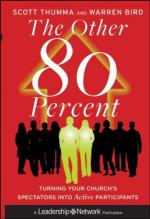Since I have mentioned Longinus, who in his Reflections has given us the same kind of Sublime, which he observes in the several passages that occasioned them; I cannot but take notice, that our English Author has after the same manner exemplified several of his Precepts in the very Precepts themselves. I shall produce two or three Instances of this Kind. Speaking of the insipid Smoothness which some Readers are so much in Love with, he has the following Verses.
These_ Equal Syllables alone require,
Tho oft the Ear the open Vowels
tire,
While Expletives their feeble Aid
do join,
And ten low Words oft creep in one dull
Line.
The gaping of the Vowels in the second Line, the Expletive do in the third, and the ten Monosyllables in the fourth, give such a Beauty to this Passage, as would have been very much admired in an Ancient Poet. The Reader may observe the following Lines in the same View.
A needless Alexandrine ends the Song,
That like a wounded Snake, drags its slow
Length along.
And afterwards,
Tis not enough no Harshness gives Offence,
The Sound must seem an Eccho to the Sense.
Soft is the Strain when Zephyr gently
blows,
And the smooth Stream in smoother Numbers
flows;
But when loud Surges lash the sounding
Shore,
The hoarse rough Verse shou’d like
the Torrent roar.
When Ajax strives some Rocks vast Weight
to throw,
The Line too labours, and the Words move
slow;
Not so, when swift Camilla scours the
Plain,
Flies o’er th’ unbending Corn,
and skims along the Main.
The beautiful Distich upon Ajax in the foregoing Lines, puts me in mind of a Description in Homer’s Odyssey, which none of the Criticks have taken notice of. [3] It is where Sisyphus is represented lifting his Stone up the Hill, which is no sooner carried to the top of it, but it immediately tumbles to the Bottom. This double Motion of the Stone is admirably described in the Numbers of these Verses; As in the four first it is heaved up by several Spondees intermixed with proper Breathing places, and at last trundles down in a continual Line of Dactyls.
[Greek: Kai maen Sisyphon eiseidon, krater alge echonta, Laan Bastazonta pelorion amphoteraesin. Aetoi ho men skaeriptomenos chersin te posin te, Laan ano otheske poti lophon, all hote melloi Akron hyperbaleein, tot apostrepsaske krataiis, Autis epeita pedonde kylindeto laas anaidaes.]
It would be endless to quote Verses out of Virgil which have this particular Kind of Beauty in the Numbers; but I may take an Occasion in a future Paper to shew several of them which have escaped the Observation of others.
I cannot conclude this Paper without taking notice that we have three Poems in our Tongue, which are of the same Nature, and each of them a Master-Piece in its Kind; the Essay on Translated Verse [4], the Essay on the Art of Poetry [5], and the Essay upon Criticism.




